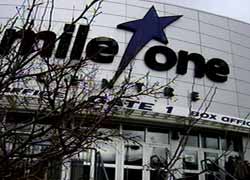Beer league hockey tradition under threat as more arenas ban dressing-room booze
If mom and apple pie define America, as the old expression goes, then surely hockey and beer are as Canadian as it gets.
But that tradition is increasingly under threat, at least in its current form. More and more arenas across the country are saying no to that post-game beer in the dressing room that has been as much a part of the game as bodychecks and slap shots.
The Mile One Centre in St. John's, N.L., became the latest to crack down on the traditional post-game brew when it banned beer in dressing rooms after recreational league hockey games.

Considering that the players consuming post-game brews play in what's commonly known as ``beer leagues," this is a major change in direction for Canada's national sport.
One rec league player, who requested anonymity, called the move "an assault on the game.
"Not having a beer in the dressing room just isn't right," said the Toronto-area resident, who admits players routinely smuggle in beer in their equipment bags for that post-game cold one.
But the days of arena staff looking the other way as players violate liquor licence regulations is rapidly coming to an end. Bans similar to the one in St. John's have been instituted from British Columbia to Prince Edward Island, starting as far back as 2007.
"It's hard to believe arenas still have to act on this," said Robert Solomon, policy director for Mothers Against Drunk Driving and law professor at Western University in London, Ont. "You would have thought the message would have gotten through, but traditions die hard.
"These are strong traditions. After a victory, the team generally doesn't go out and order milk and cookies because we have this idea that real men can drink a lot and hold their liquor."
St. John's city councillor Sandy Hickman, who spearheaded the ban at the Mile One arena, agrees.
"How many arenas across the country do you think they're drinking beer after games?" he asks. "But things have to change with the times."
Hickman says the Mile One move wasn't precipitated by any one incident. Instead, an arena manager adiscovered empty beer bottles in a dressing room and decided to crack down.
A citizen complaint about drinking that followed prompted the city to move with haste.
"We decided that was enough," he said. "We've always pushed against beer in dressing rooms, but I guess this was the last straw."
Anyone caught with beer in the dressing rooms will be barred from the arena, Hawkins said.
What's amazing, in many ways, is that bans like this one are even necessary.
Under liquor licence regulations across the country, alcohol can be drunk only on private property or in a licensed room.
"If (arena operators) don't have a licence for the dressing room, serving or allowing alcohol to be consumed would be illegal," said Solomon.
"Everyone does it, but it isn't allowed."
One reason behind the growing number of alcohol bans may be the matter of liability. As Solomon points out, if a player has one too many and injures someone in a parking-lot brawl, the arena could be liable if it's proven they were aware alcohol was being drunk in the dressing rooms.
"It would have to be proved that the arena hadn't addressed issues in the past," he said. "But if they allow alcohol on the property illegally, that may put in jeopardy their liquor licence."
The big risk, though, is drunk driving. As Solomon points out, not many people walk to the arena carrying a heavy equipment bag in winter.
An arena bar would potentially be liable if it served a player to the point of intoxication and he got into an accident on the way home. The arena itself might also be liable if a player chugged too many in the dressing room and got into an accident, if it could be proven they were aware what was going on behind closed doors.
But where there's a will, there's a way.
At least one Ontario arena company has come up with a novel way of handling the issue. Canlan Ice Sports has a beer-cart service after games in its four Toronto-area rinks.
Once the players have retreated to the dressing room, an arena employee knocks at the door and presents a cart full of ice and beer. According to one player, there appears to be no limit on sales.
But, as general manager Dan D'Alvise points out, teams have only 30 minutes to clear the room after games.
``How much can they drink in half an hour?" D'Alvise said, noting that servers comply with all liquor licence regulations. ``It would be pretty hard to pound back three beers in that short a time."
D'Alvise said the company has a ``zero tolerance" policy on people bringing in their own beer and received a licence to serve beer in dressing rooms last year. There have been a few issues with teams still bringing their own beer to games, but
``We've been trying for some time to weed out the rogue drinkers," he said. ``It's kind of built into the culture of adult hockey, but our way around it was to do this. We're pleased with the results so far."
That may be working, but Solomon isn't sure it's the wisest move.
"If they have a licence, that's fine and dandy," he said. "No harm, no foul.
"You might question the wisdom of doing that."
Of course, a conspiracy theorist might see this as a thinly disguised move to push players from drinking their own beer and instead buying it at the arena bar.
Either way, things are changing for the beer leagues.
More from Yahoo Canada Sports:

 Yahoo Sports
Yahoo Sports 

